Like most councils, Brisbane has a list of suggested plants as part of their policy. You can use it as a guide, ask advice from your local community nursery, or look around to see what plants are growing in nearby gardens.
If you asked me how many different species I have on the verge I would have said six or seven. Only doing this post have I realised how many there are – which is great for biodiversity. Follow the (more) links if you want to see more about that plant on my garden blog.
Native plants in my verge garden
Austromyrtus dulcis (Midgen Berry) Pretty, open shrubs with flowers and small berries. A bush tucker food. Very hardy once established. (more)
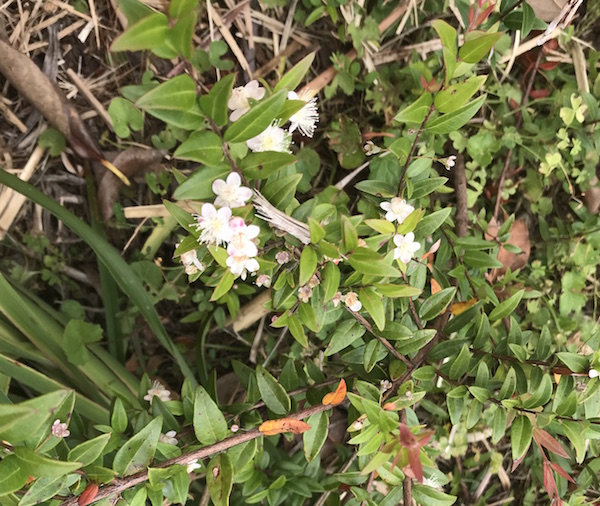
Myoporum boninense ssp.australe Extremely tough – so tough you sometimes see this on median strips. Tiny white flowers and red berries for the birds and lizards. Cuttings strike easily. Sprawls, trim to any shape or to keep compact. (more)
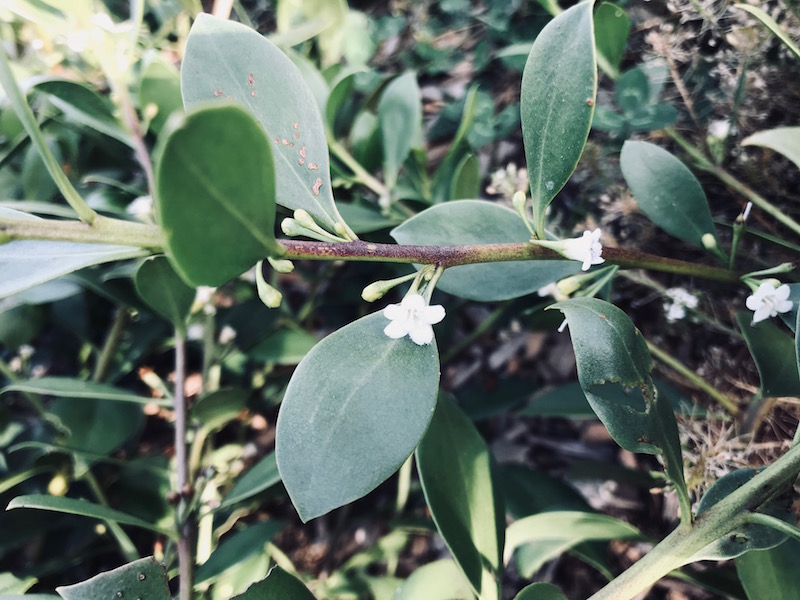
Goodenia ovata Low sprawling plant with tough leathery leaves and delicate yellow flowers. Excellent ground cover. Have had mixed success with this. Too dry under the street tree. (more)
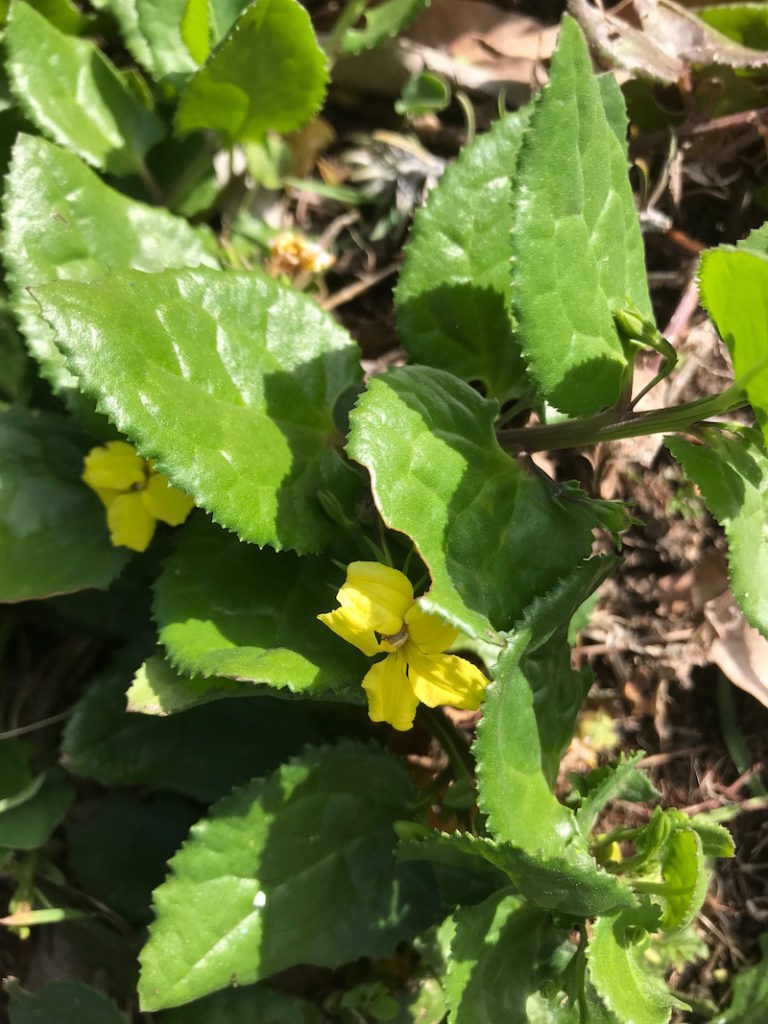
Kangaroo Paw (native but not to this area)
Some divisions from a plant inside the garden. Most of the year it is just some strappy leaves but when it flowers, it is magnificent. Not all kangaroo paw does well in Brisbane but this one seems to. (Westringia bushes are in the background)
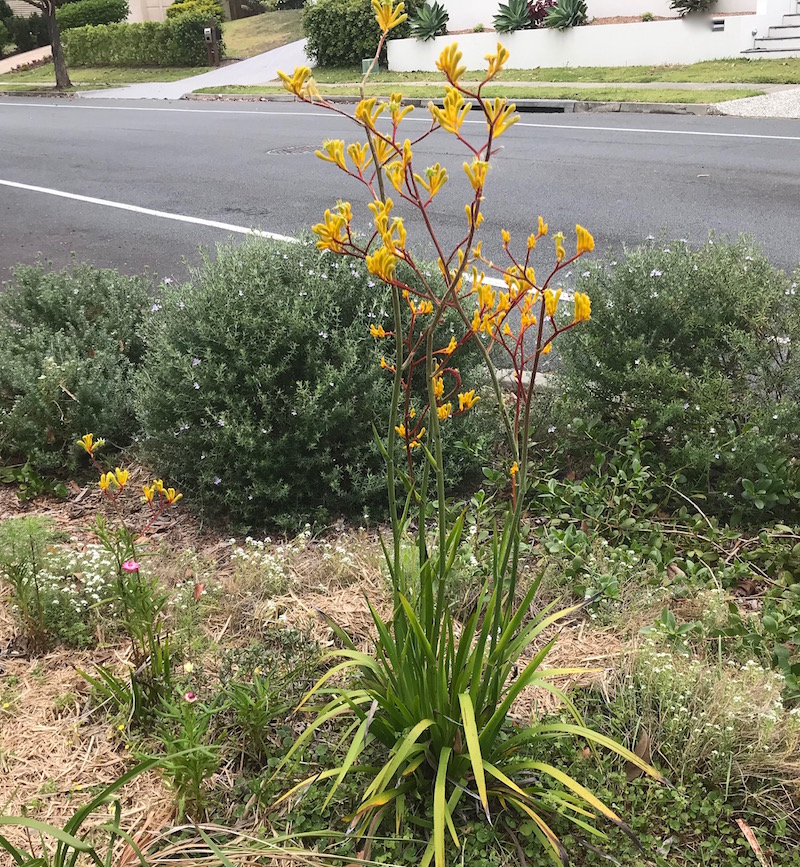
Westringia erimicola and Westringia fruticosa Coastal rosemary with more delicate leaves and mauve flowers all year round. Very popular with bees. Can be trimmed to any shape and makes neat ball shapes if you prefer neat. (more)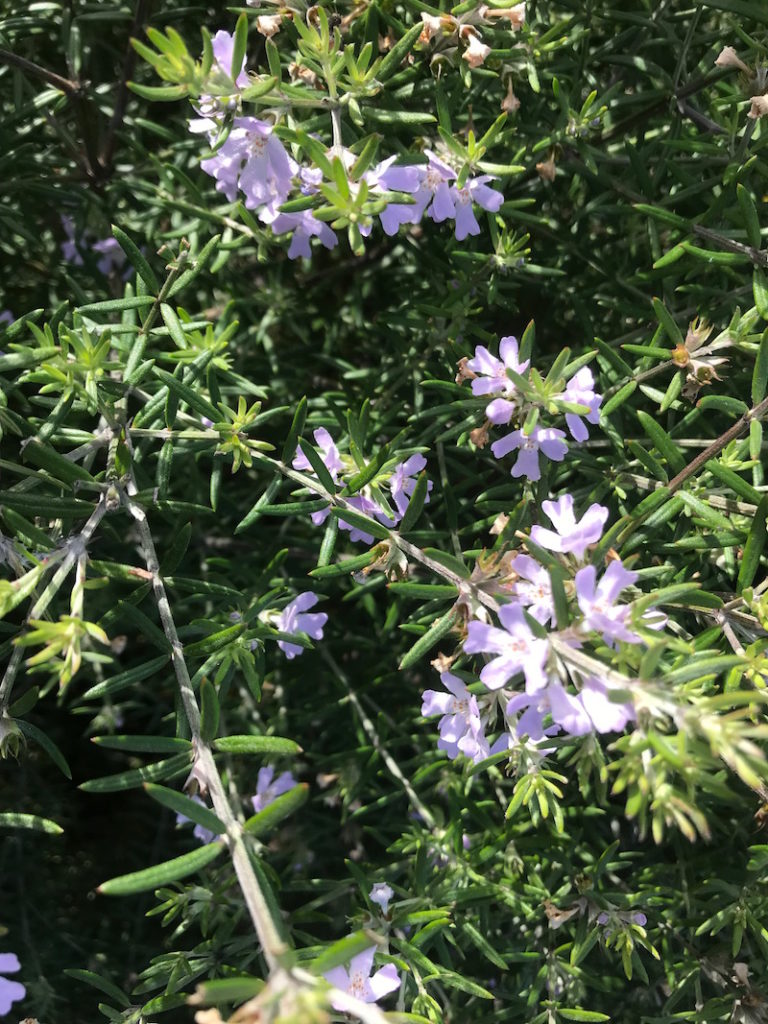
Baeckea virgata dwarf version, slow growing can be trimmed to shape. Native bees love this when in flower. (more)
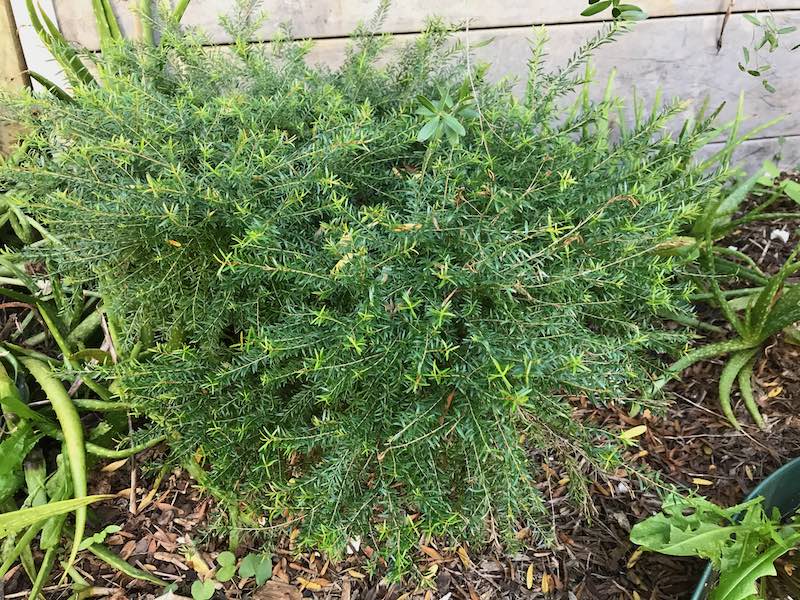
Scaevola (fan flower)
Spreading plant tends to form small mounds. One lasted two years under the street tree but dry weather was too much. Another grown from a cutting was thriving in a different bed until one day it curled up its toes. Passing dog left its mark perhaps. Now there’s one in the bed in front of the mailbox. If it gets straggly just give it a trim. This plant does really well until it doesn’t so always best to keep some cuttings on the go. (more)

Xerochrysum bracteatum Everlasting or Paper Daisies
Supposed to be perennials but usually grown as an annual.
Flowers last a long time and are attractive throughout their life cycle. Attractive to butterflies and native bees. You can buy punnets of these to fill gaps or transplant the self-sown plants.
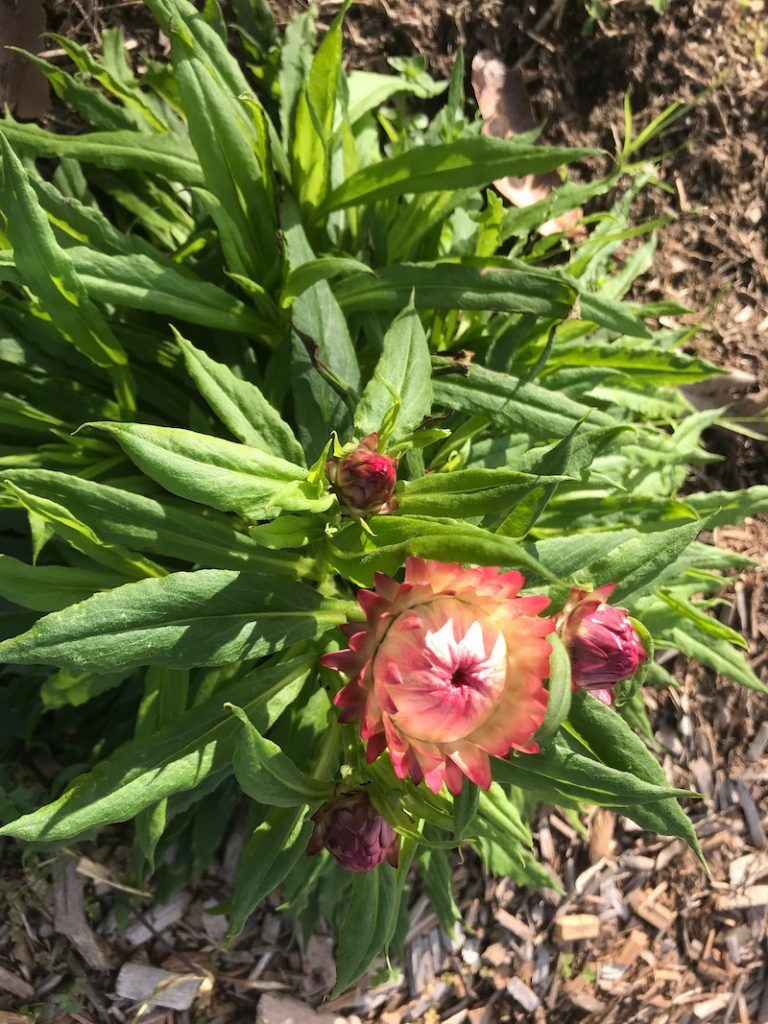
Banksia spinulosa dwarf Banksia Cherry Candles
This was a gift intended for the verge. Otherwise I’d not spend that much on a verge plant. Slow to establish – one of the branches was snapped off early on, probably by a dog, but it’s doing well now.
Dianella brevipendunctulata – Blue Flax-Lily
Strappy leaves. Rich purple berries follow delicate flowers. I’ve managed to grow some more from seed.
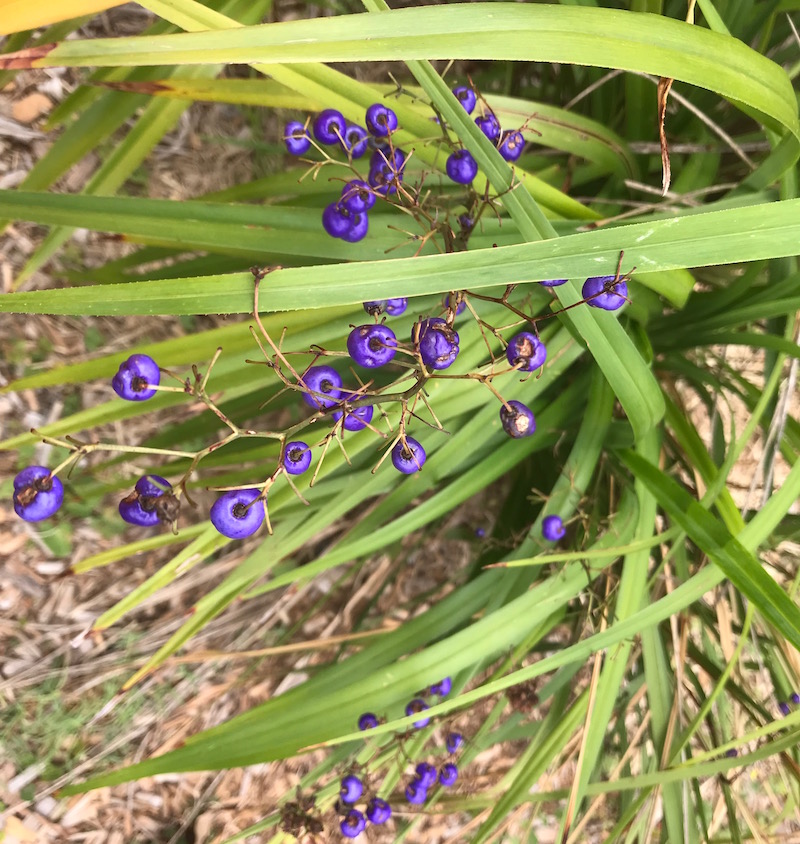
Orthosiphon aristatus – Cat’s Whiskers
Attracts birds, native bees and butterflies. Gets a bit leggy if shaded but responds well to trimming. Intricate white flowers with lilac at the tips. The one with lilac flowers is less hardy. Grow easily from cuttings. (more)
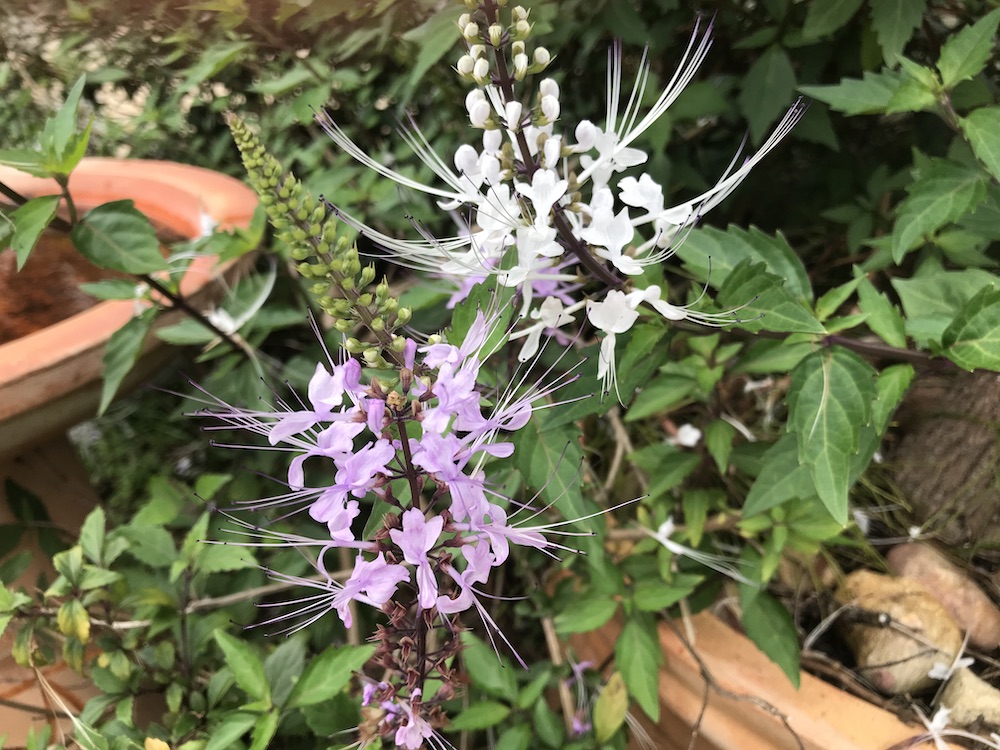
Crinum pedunculatum Swamp or River Lily
Strong green strappy leaves with a large, delicate flower, popular with the native bees (they use the tip of the flower like a seesaw). I’ve grown these from seed. Planted back from the path so it doesn’t obstruct pedestrians or views. (more)
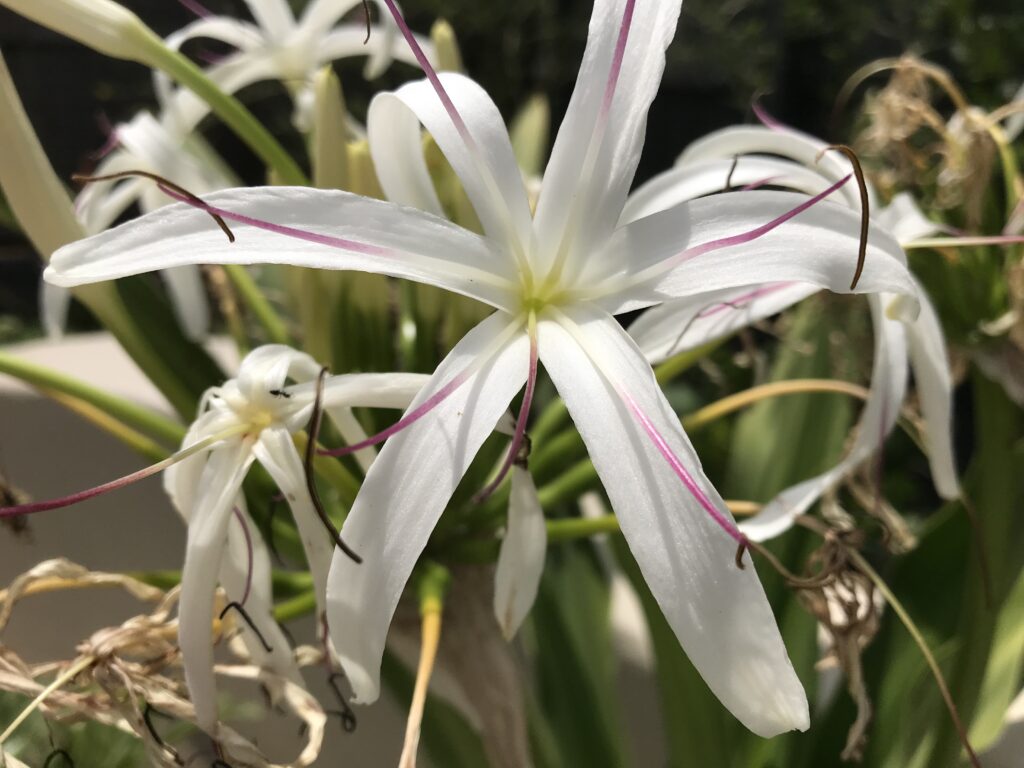
Plumbago Zeylanica
Attractive, scrambling shrub to 1m. Flowers white or pale mauve from spring to autumn. Sticky fruits adhere to clothing, skins and pets and may be a minor nuisance near walkways or other high traffic locations so is well back from the footpath. I planted this on the shady side of the verge after seeing it planted en masse at the Gumbi Gumbi Gardens in Toowoomba. Food plant for Zebra Blue butterfly.
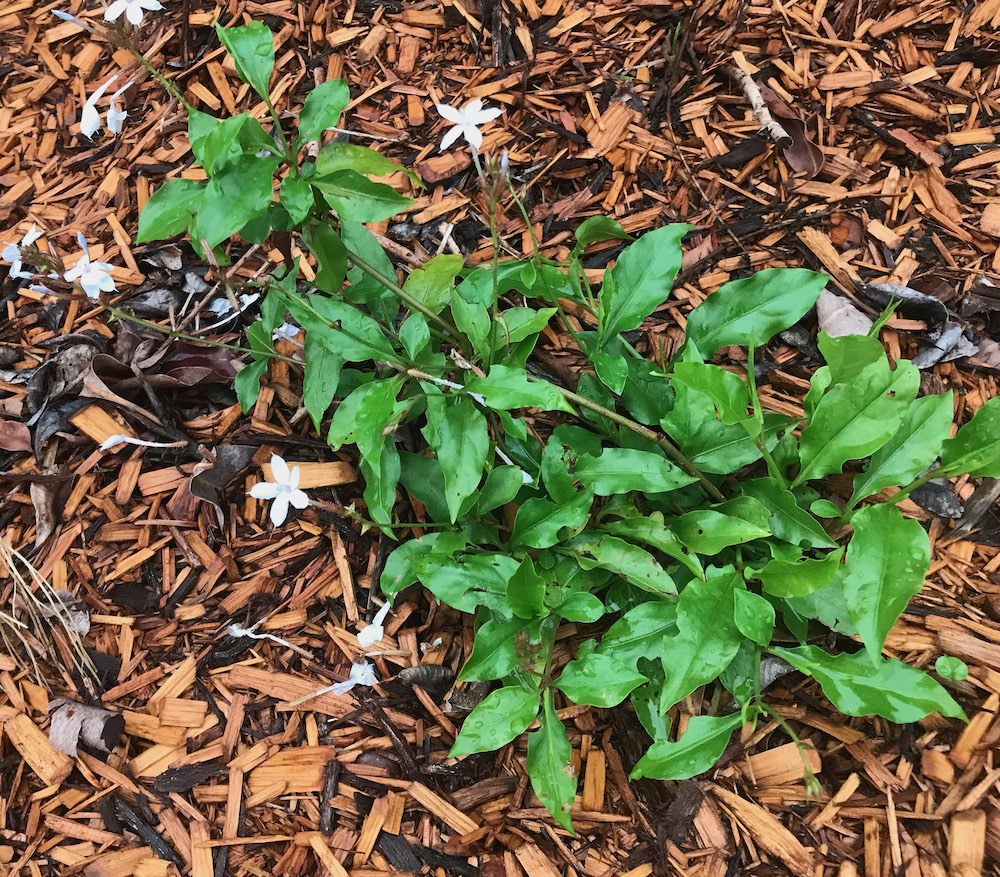
Native Groundcovers
These add an extra layer of plants increasing habitat for small creatures and biodiversity. They provide a sort of patterned carpet with some dominating others at different times of the year.
Chrysocephalum apiculatum (Yellow Buttons)
Hardy groundcover does well under the street tree. Host plant for Painted Lady Butterfly. (more)
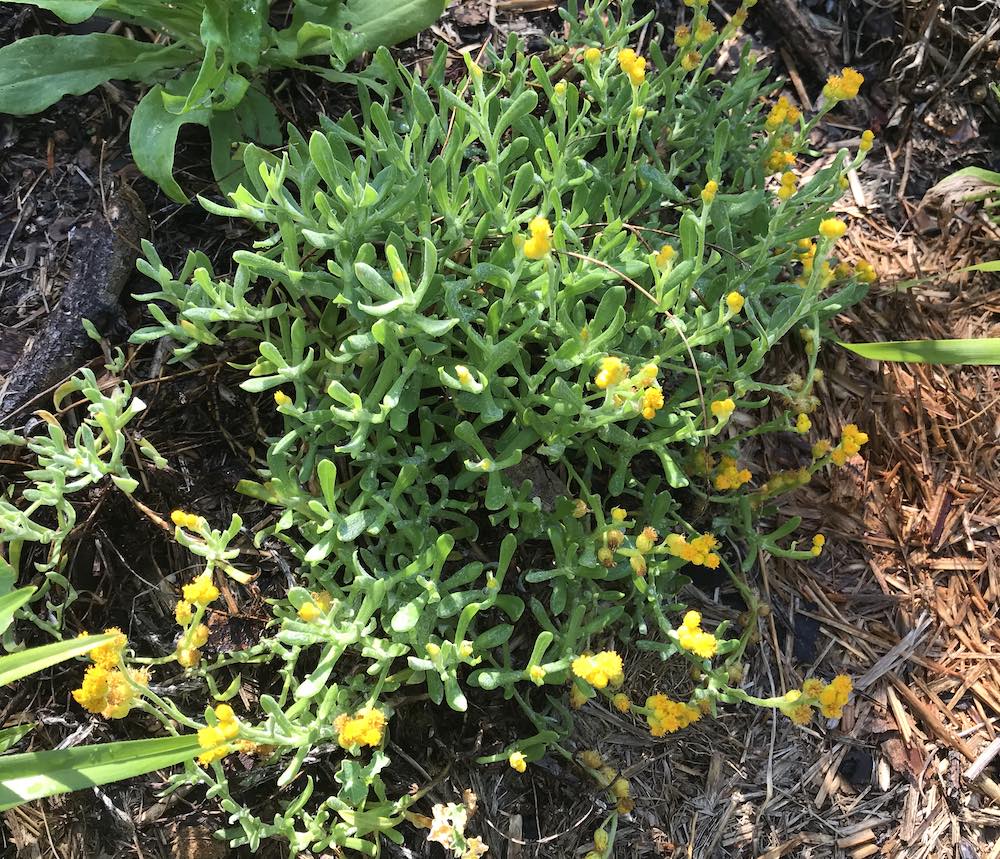
Dichondra repens – Kidney Weed. A native ground cover and living mulch
Mazus Pumilio – A native ground cover and living mulch. Common Name is Swamp Mazus and likes wet to waterlogged soils but it does quite well on the verge especially where it is shaded. Tiny lilac/blue flowers in Spring-Summer. (more)
Viola hederacea / banksii (Native Violet) prefers the shade close to the fence line and hedge. Surprisingly hardy dies back in dry heat but springs back after some rain. (more)
Non Native (Exotic) Plants
Osteospermum (African daisy) perennial mounding bush with flowers almost all year. Bees love them. Grow from cuttings or get small plants from the garden centre. I used these as space fillers but now replaced with other plants.
Alyssum – very hardy, self-seeding annual. Bees love it. People love it. Grow initially from seed or punnets from garden centres. The white is more common and hardier than purple.
Salvia – perennial (cut to the base when it dies back and it will shoot up next spring) Bees love it. Self seeds. Now I have more native plants I am removing these even though they are popular with passersby.
Gerbera – usually very hardy but they’ve struggled on my verge. Possibly heavy clay and too shaded.
Nasturtiums – come up each year (self-seeded). You need to keep them in check but they are great for keeping weeds down in winter when other plants are dormant. Bees love them.
Geraniums / Pelargonium – hardy, long lasting. Grow easily from cuttings. People like them.
Aloe vera – the first thing I planted along the fence line under the hedge where they are shaded most of the time.
And not forgetting the street tree
Lophostemon confertus (MYRTACEA) Brush Box
See my listing in the Shady Lanes directory. You could add yours to help build up lots of examples to help others.